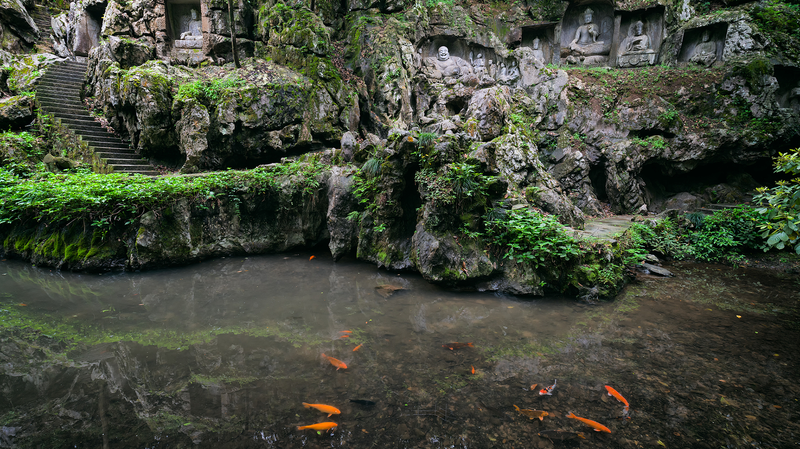Feilai Peak: An Open-Air Gallery Carved in Stone
Just steps from the historic Lingyin Temple in east China's Hangzhou, Feilai Peak rises like a limestone fortress. Its rugged cliffs and hidden caves house a treasure trove of over 340 Buddhist carvings, spanning the Five Dynasties, Song and Yuan eras.
Among these, the Song Dynasty Maitreya statue stands out with its serene smile and intricate drapery. Scholars believe it captures a pivotal shift in Buddhist art, blending spiritual grace with evolving sculptural techniques.
Flowing beneath the peak, crystal-clear streams meander through ancient pines, creating a tranquil backdrop that marries nature and religious heritage. Visitors can follow winding paths to discover moss-covered grottoes and delicate stone reliefs that whisper stories of pilgrims past.
Local legend credits the name Feilai Peak—literally 'Flying Peak'—to the eccentric monk Jigong, who is said to have witnessed a massive boulder airborne. Today, the stone sentinel remains a symbol of Hangzhou's living folklore.
As part of the West Lake cultural landscape heritage, Feilai Peak offers more than a glimpse into China's artistic legacy: it invites young global citizens, travelers and changemakers to connect with a millennium of history carved in rock.
Reference(s):
Hangzhou's Feilai Peak: Ancient Grottoes Amidst Limestone Splendor
cgtn.com




